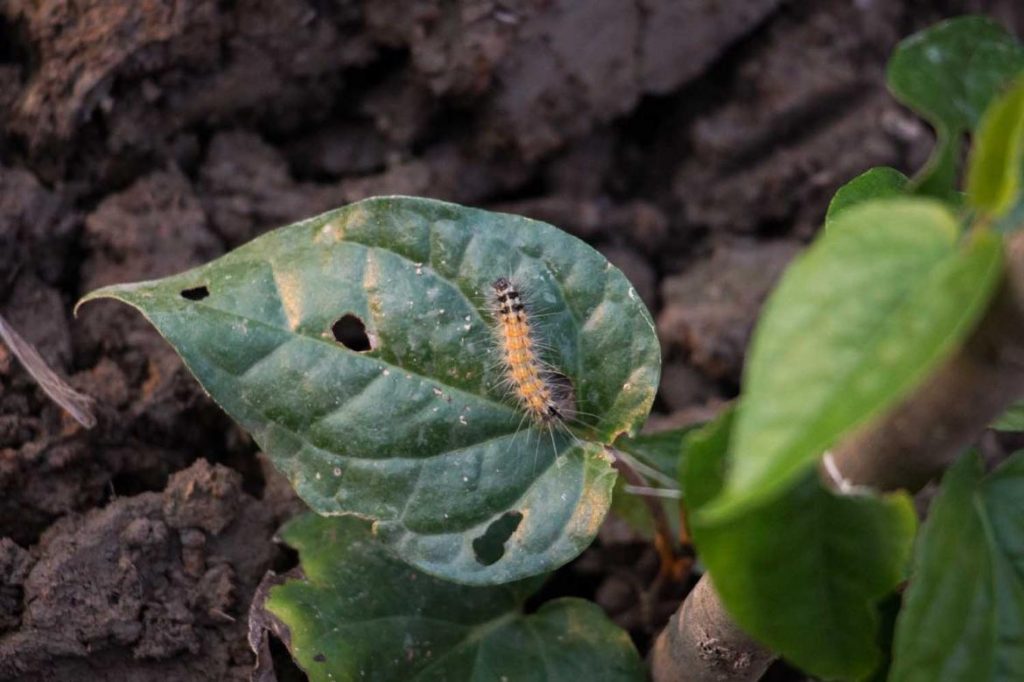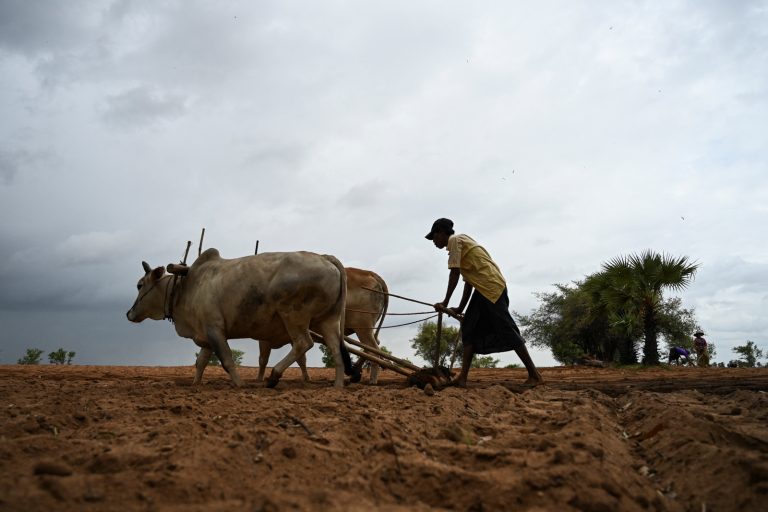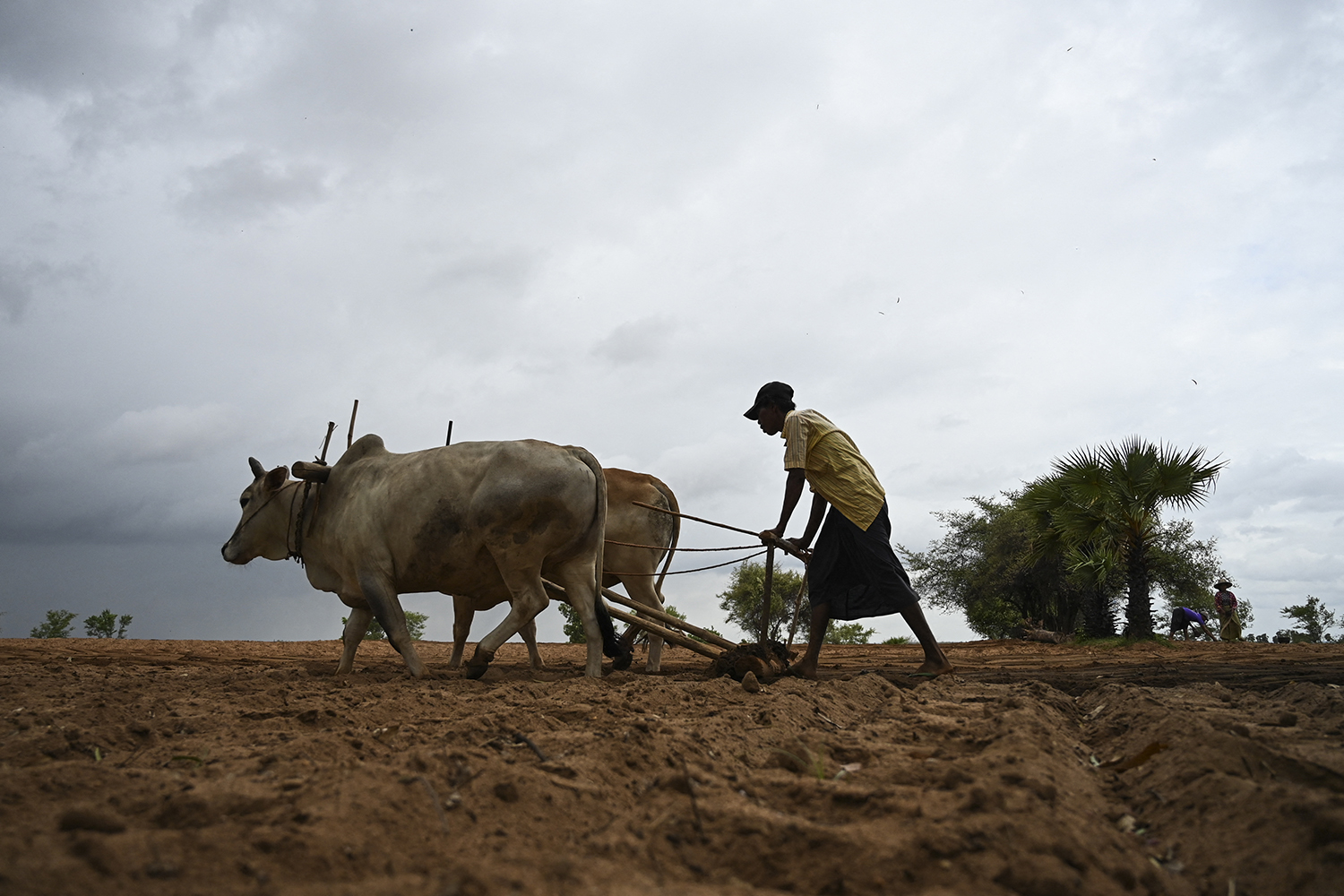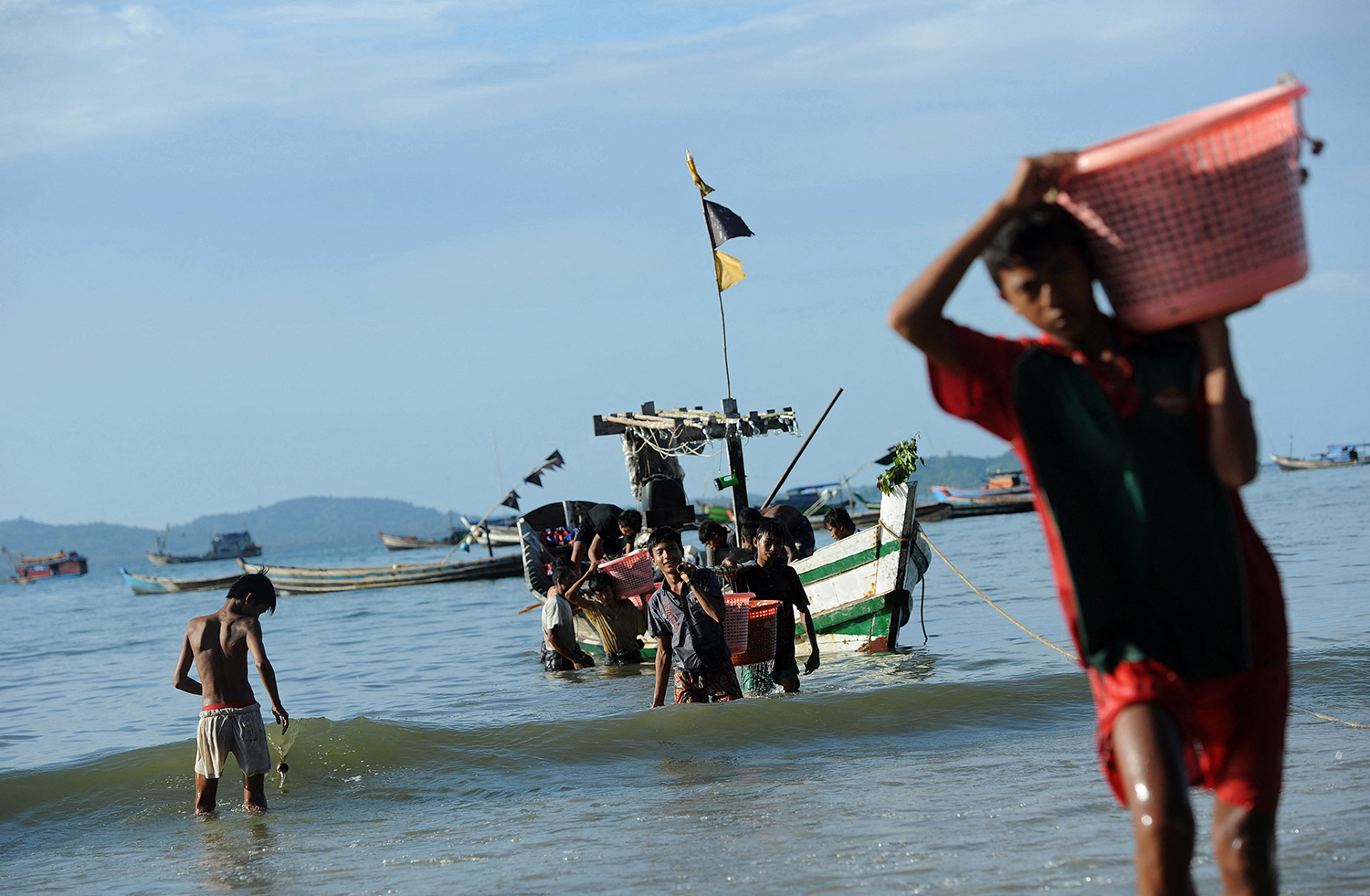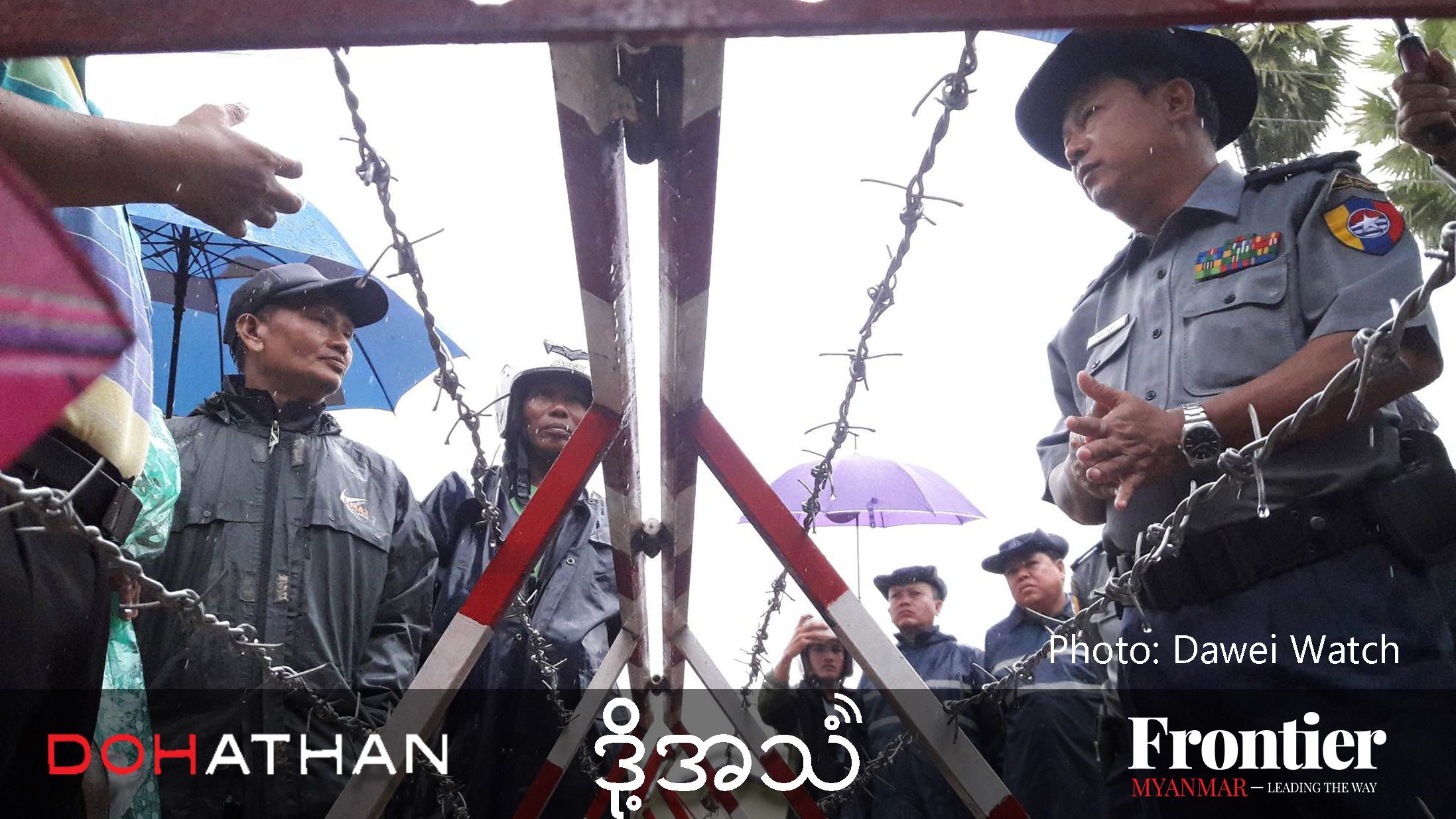Farmers in a village in Ayeyarwady Region say that heavy flooding in recent years has severely affected their income, forcing them into a cycle of debt.
By SU MYAT MON | FRONTIER
Photos NYEIN SU WAI KYAW SOE
THE RED blotches seen on pavements and in the corners of stairwells across the country are evidence of how common the habit of betel chewing is in Myanmar.
But for the growers of betel leaf, which is wrapped around the seed of the areca nut to form a “quid”, its popularity does not necessarily translate into a high income.
Betel leaf growers in Pantanaw Township, Ayeyarwady Region, say that heavy monsoon rains in the past two years have devastated their crops, causing a severe loss in income that has led many of them to take out high-interest loans that they are struggling to pay back.
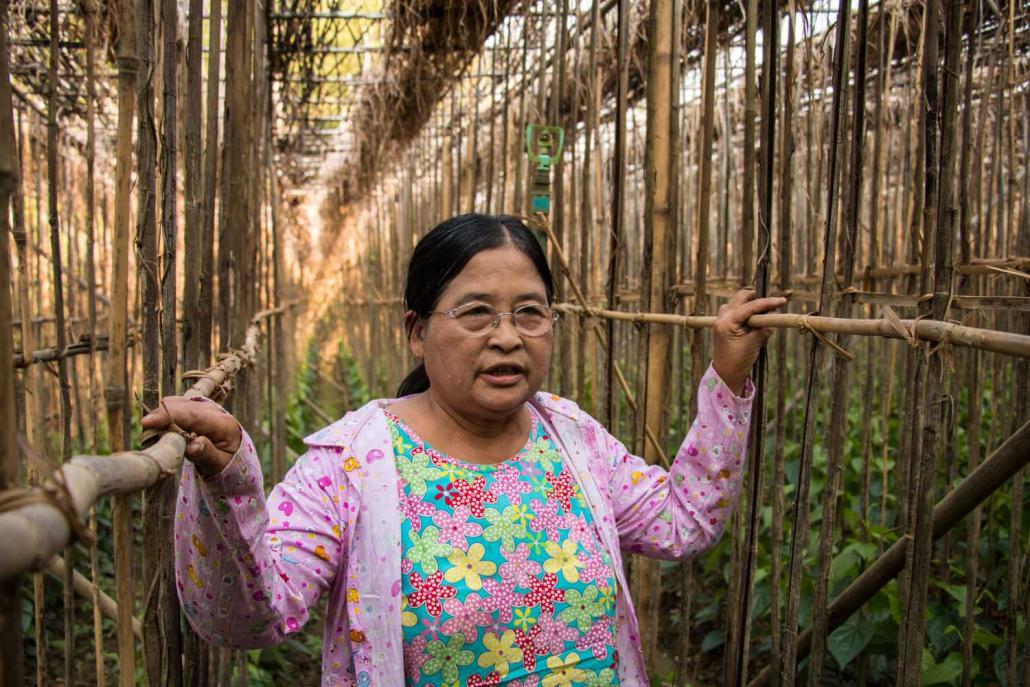
Residents of Taw Kyaung village in Pantanaw Township say that flooding in the past two years has had a devastating impact on their betel leaf plantations, and forced many into debt. (Nyein Su Wai Kyaw Soe | Frontier)
Support more independent journalism like this. Sign up to be a Frontier member.
Myanmar has felt the impacts of severe flooding in recent years. In the middle of 2015, more than 100 people were killed and about one million affected by floods, and last year, although the numbers were lower – dozens killed and about 500,000 displaced – the floods still had a significant impact, particularly in Ayeyarwady Region where even major towns were inundated.
Regarded as one of the most fertile parts of the country, the Ayeryarwady Delta is well known for its high quality produce, including rice, corn and chilli. Residents say that the best betel leaf in the region is grown in the area around Pantanaw, about 60 miles (96 kilometres) west of Yangon.
In Taw Kyaung village, Pantanaw Township, betel leaf cultivation is a crucial part of the local economy. Residents say that the floods of recent years were so destructive that they struggled to re-grow the vines at the end of the rainy season.
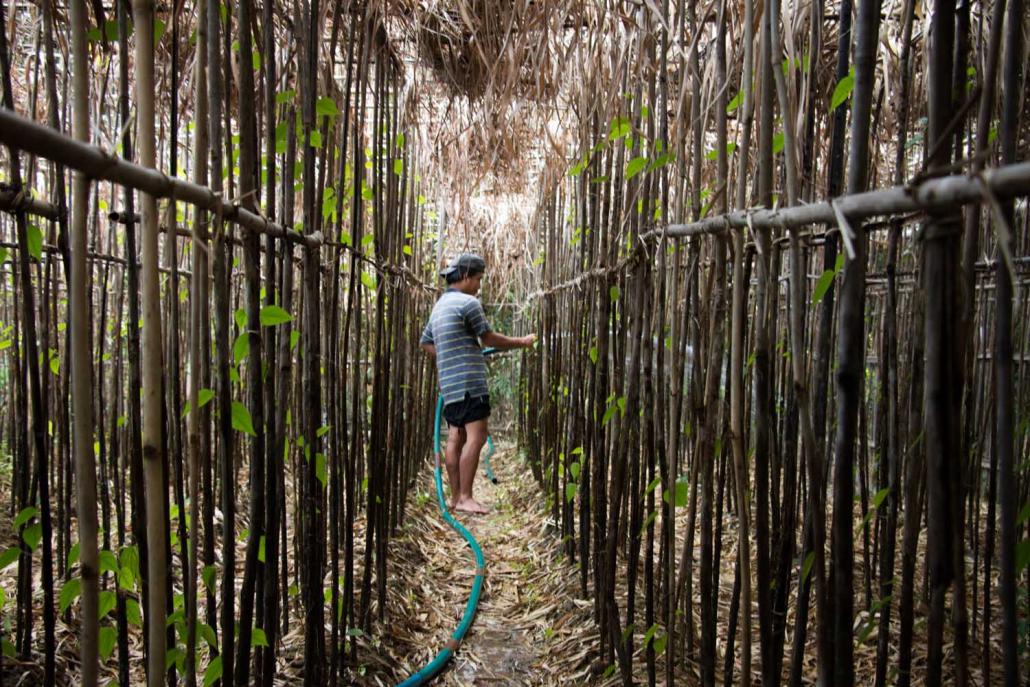
Nyein Su Wai Kyaw Soe | Frontier
“Most of the villagers here earn their living by growing betel, but for the past two years the betel plantations have been devastated,” said Daw Khin Sein, 59, who operates a betel plantation of about 7,000 vines in Taw Kyaung.
Khin Sein said that if the flooding is as severe this monsoon as it has been for the past two years, she will have to take out a loan again.
“This year my debt is unlikely to be paid off because of the difficulties we face growing betel after the flooding,” said Khin Sein, whose husband died of a kidney disease four years ago.
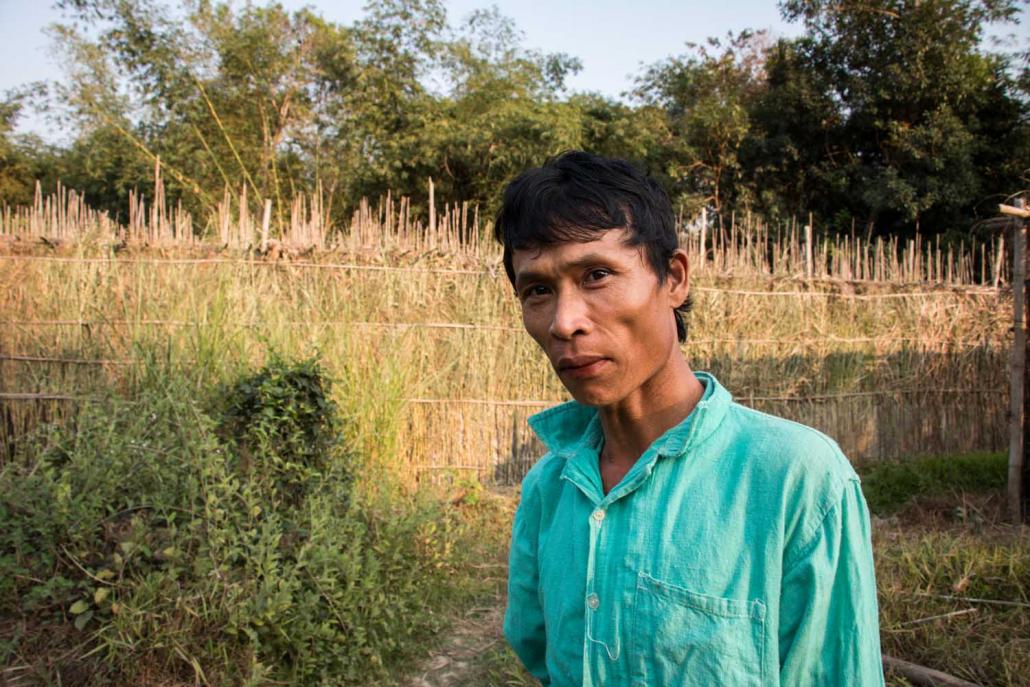
Nyein Su Wai Kyaw Soe | Frontier
The government has taken some measures to decrease the habit of betel chewing, but evidence suggests it is on the rise, especially among young people. The Global Youth Tobacco Survey of tobacco users under 15 found that 18.6 percent of respondents were using smokeless tobacco in 2011, up from 5.7 percent in 2001.
A 2011 study in Myanmar by the World Health Organization found that 51 percent of men and 16 percent of women aged 15 or over used smokeless tobacco.
In an interview with Frontier last year, Dr Than Sein, president of People’s Health Fund, a Yangon-based NGO, said that about 10 percent of betel users in Myanmar have mouth cancer.
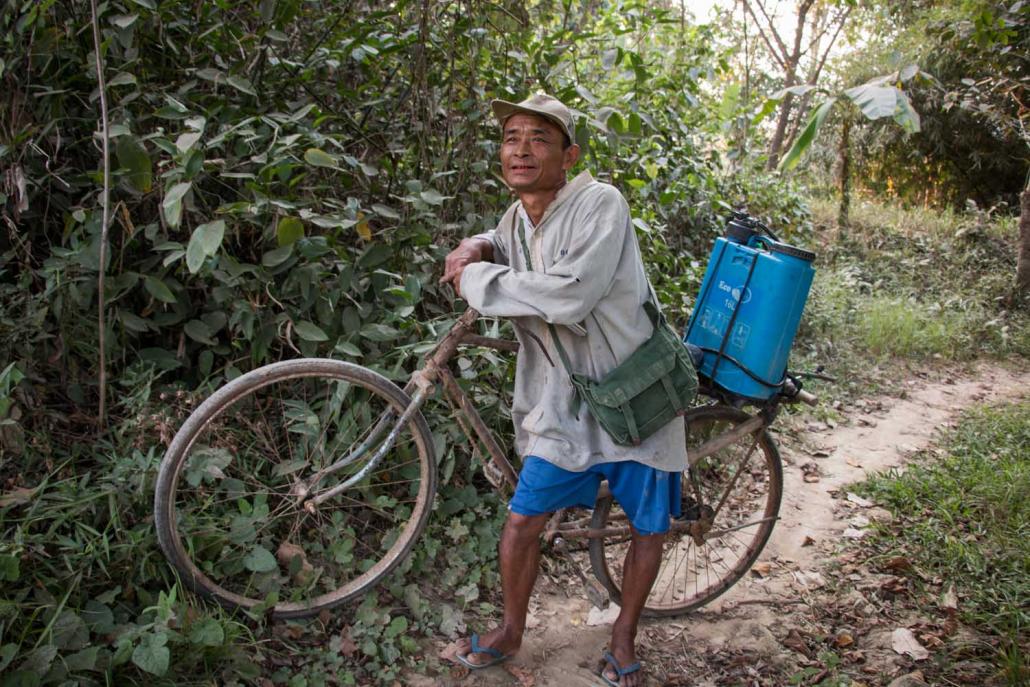
Nyein Su Wai Kyaw Soe | Frontier
But for the residents of Taw Kyaung, and many other villages across the country, it is a crucial source of income.
Daw Kyu Kyu Win, 55, has spent her life growing betel leaf, and today operates a plantation of about 6,000 vines in Taw Kyaung. When the time comes to pick the leaves, typically in November and December, she employs a labourer who she pays K2,500 a day, and also elicits the help of her daughters.
Once they have been picked and packaged, Kyu Kyu Win arranges the leaves by size. The largest are transported to Yangon, usually to Hlaing Township’s Thiri Mingalar Market, and the smaller leaves are sold locally.
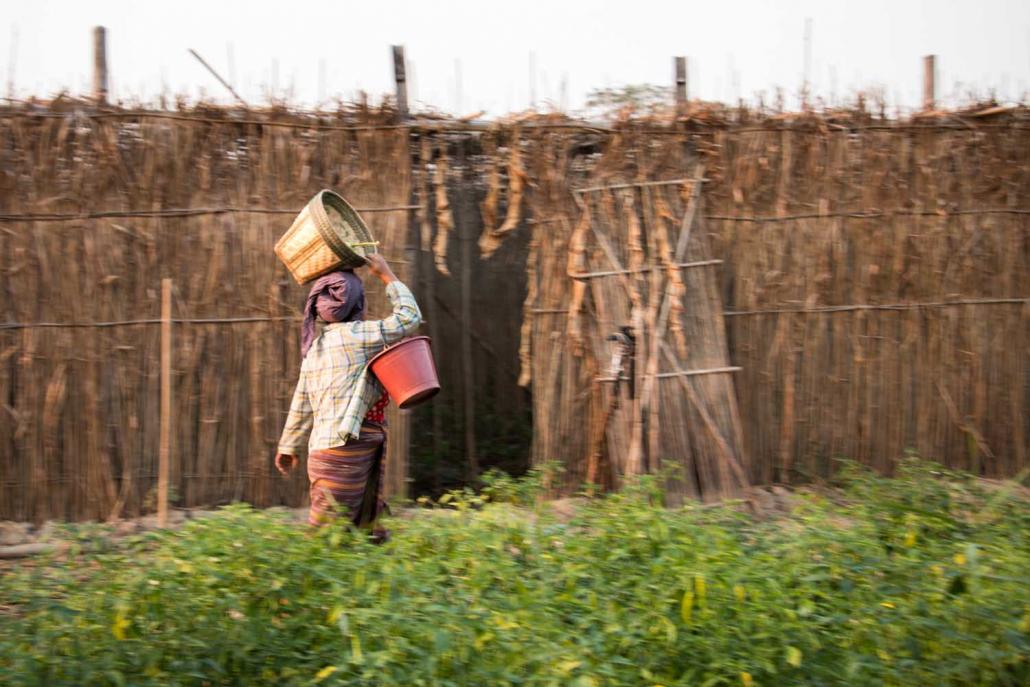
Nyein Su Wai Kyaw Soe | Frontier
U Myo Myint, 39, operates a plantation of 10,000 vines in Taw Kyaung. With a family of five to feed, he said the heavy rains in the past two years have led him to take out high-interest loans that have forced him into debt.
“If the income is good during the year, then we are able to save money but otherwise life becomes very difficult,” he said.
He said he does not have enough money to use chemicals that make the leaves bigger, a common practice according to villagers.
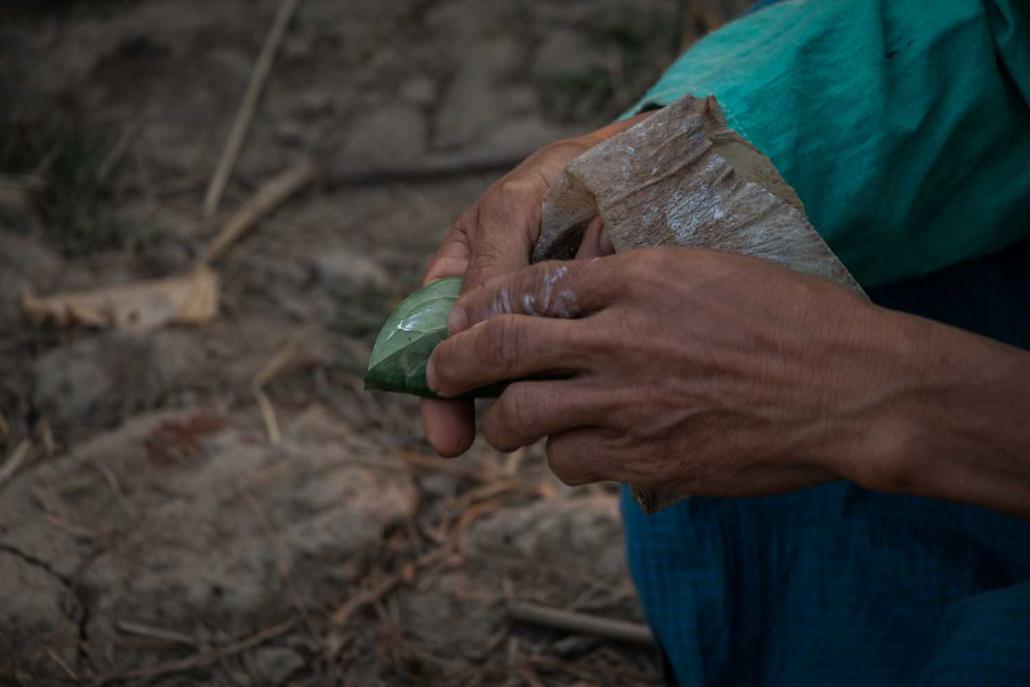
Nyein Su Wai Kyaw Soe | Frontier
Although life is difficult in Taw Kyaung, with recent political changes having brought few improvements, Myo Myint said he has no interest in moving elsewhere in search of work, as many villagers have done.
“Going to another country does not interest me,” he said.


